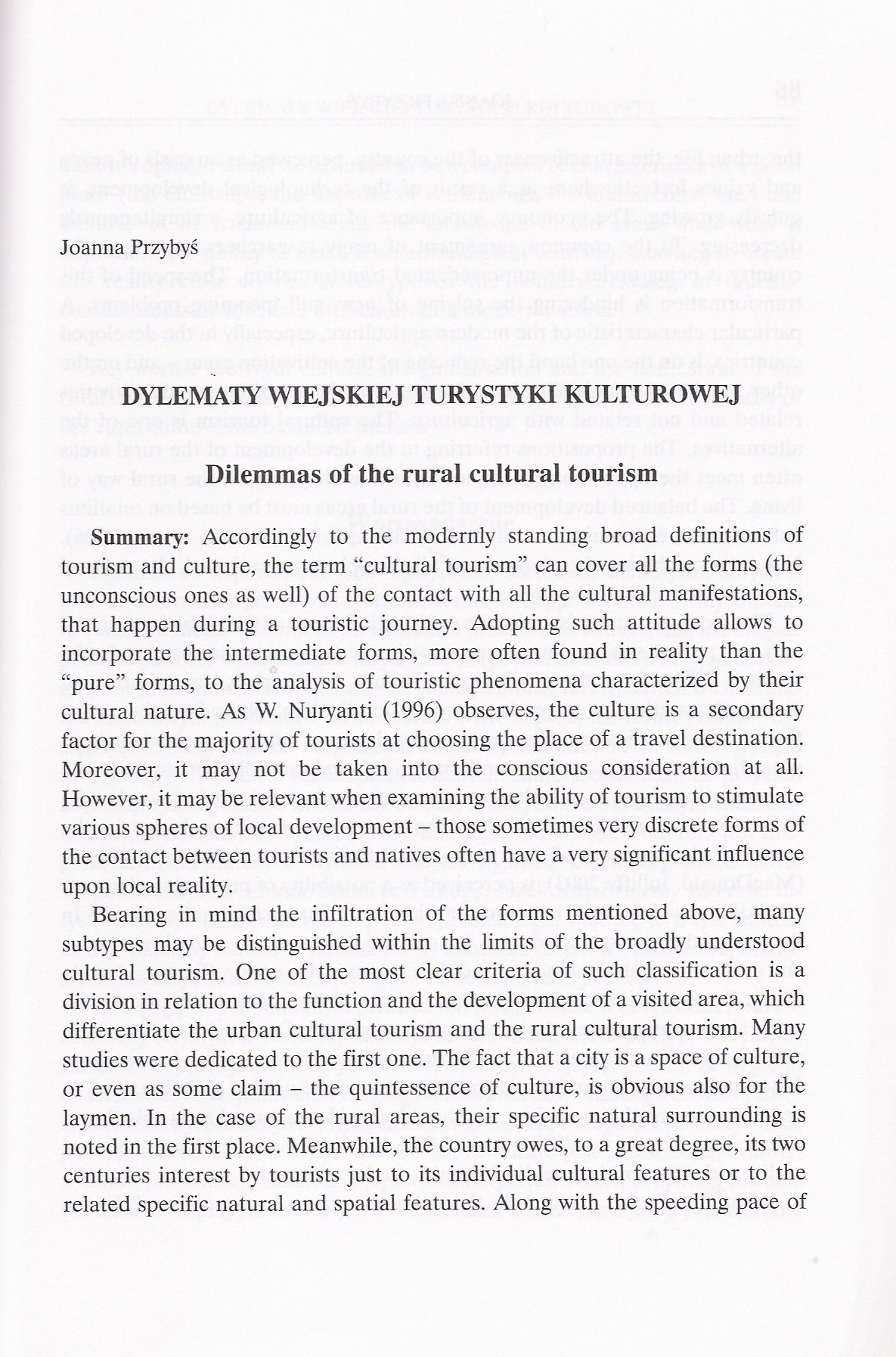15643 skanuj0082 (19)

Joanna Przybyś
DYLEMATY WIEJSKIEJ TURYSTYKI KULTUROWEJ
Dilemmas of the rural cultural tourism
Summary: Accordingly to the modernly standing broad definitions of tourism and culture, the term “cultural tourism” can cover all the forms (the unconscious ones as well) of the contact with all the cultural manifestations, that happen during a touristic journey. Adopting such attitude allows to incorporate the intermediate forms, morę often found in reality than the “pure” forms, to the analysis of touristic phenomena characterized by their cultural naturę. As W. Nuryanti (1996) observes, the culture is a secondary factor for the majority of tourists at choosing the place of a travel destination. Moreover, it may not be taken into the conscious consideration at all. However, it may be relevant when examining the ability of tourism to stimulate various spheres of local development - those sometimes very discrete forms of the contact between tourists and natives often have a very significant influence upon local reality.
Bearing in mind the infiltration of the forms mentioned above, many subtypes may be distinguished within the limits of the broadly understood cultural tourism. One of the most elear criteria of such classification is a division in relation to the function and the development of a visited area, which differentiate the urban cultural tourism and the rural cultural tourism. Many studies were dedicated to the first one. The fact that a city is a space of culture, or even as some claim - the ąuintessence of culture, is obvious also for the laymen. In the case of the rural areas, their specific natural surrounding is noted in the first place. Meanwhile, the country owes, to a great degree, its two centuries interest by tourists just to its individual cultural features or to the related specific natural and spatial features. Along with the speeding pace of
Wyszukiwarka
Podobne podstrony:
skanuj0096 (18) 99 DYLEMATY WIEJSKIEJ TURYSTYKI KULTUROWEJ L.K. Medina proponuje podejście, które mo
skanuj0096 (18) 99 DYLEMATY WIEJSKIEJ TURYSTYKI KULTUROWEJ L.K. Medina proponuje podejście, które mo
skanuj0104 (17) 107 DYLEMATY WIEJSKIEJ TURYSTYKI KULTUROWEJ 12. Wagabunda (drifter
skanuj0114 (13) 117 DYLEMATY WIEJSKIEJ TURYSTYKI KULTUROWEJ Melian-Gonzalez A., Garcfa-Falcón J. M.,
skanuj0102 (17) 105 DYLEMATY WIEJSKIEJ TURYSTYKI KULTUROWEJ Ryc. 2. Proces decyzyjny w turystyce kul
17336 skanuj0110 (16) 113 DYLEMATY WIEJSKIEJ TURYSTYKI KULTUROWEJ działywania na sferę tożsamości, i
81730 skanuj0100 (15) 103 DYLEMATY WIEJSKIEJ TURYSTYKI KULTUROWEJ A. Mellian Gonzalez i J. M. Garda
więcej podobnych podstron